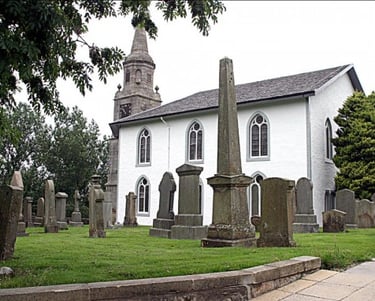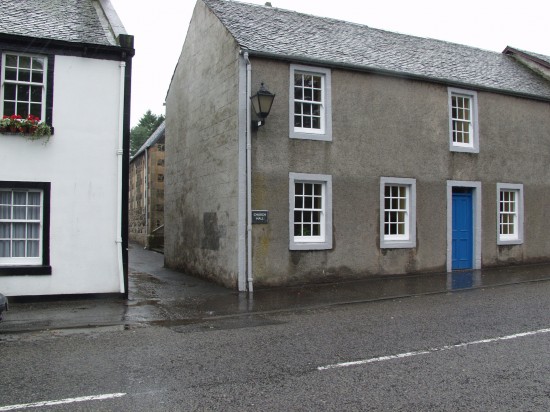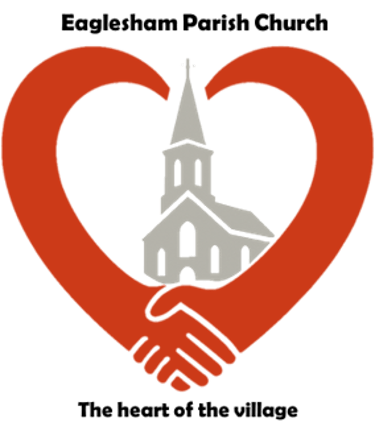OUR STORY
Church History
Origins and History
It is probable that there has been a place of worship on this site from earliest Christian times – perhaps as early as the fifth or sixth centuries. Indeed, the name of the village derives from : eaglis -' the church' and ham -'the small township'. The first Christian Church, of a very simple nature, is likely to have been close to the present location, across the "Orry" from the moot hill, where the small village settlement or "Kirk-toun" would have been. And so Church and Village have been inextricably woven together down through the centuries!
Although it is likely that the church continued to serve the village through the early medieval period, It is from the fourteenth century that records tell us of Eaglesham Church as a prebend or kind of extension charge, of Glasgow Cathedral, under the patronage of the Montgomerie family who had arrived in Britain in the wake of the Norman Conquest and had been given the lands of Eaglesham. Thus began the system of patronage whereby the local lord provided the building for worship and had the right to appoint to the post of rector or minister (no vacancy committee then !). This was to be a source of great contention in Eaglesham and across the national church in later centuries, leading to numerous secessions.
On the rear wall of the Church, downstairs, the succession of ministers from 1388 is shown. The Church was relatively untouched by the Reformation and became one of the furthest -flung charges of Glasgow Presbytery. And so it has remained. Following the signing of the National Covenant in the seventeenth century, and the Government's attempts to establish an Episcopal system in Scotland, the church in Eaglesham was close to the most intense conflict of the Covenanting times and graves of two martyrs (Gabriel Thomson and Robert Lockhart) can be seen in the Kirkyard.
Even in the more moderate times of the eighteenth century the congregation in Eaglesham remained steadfast to its Presbyterian traditions and was not always inclined to agree with its patron. One nominated minister, with Glasgow presbytery dignitaries, was chased back down the Bellcraig to Clarkston because he was not to their liking!
The present Church was designed by Robert McLachlane and completed in 1790, just as the new planned village of Eaglesham was taking shape. The Gothic-style structure, originally octagonal, is joined to a classical ashler steeple with clock tower, inscribed with the uncompromising
'woe is unto me if I preach not the Gospel'.
The simple, but beautifully effective, interior is tastefully decorated and virtually retains the original design. The present, finely embroidered Pulpit Fall is by Fiona Hamilton, one of the present Elders and replaces a similar fine work by Kathleen Whyte, now on display on the wall to the right of the Chancel.
In the back gallery, a fine two-manual "Father Willis" organ is installed. Originally designed and built in the 1880's for a large house in Bearsden, the organ was gifted to Queen's Cross Church, Glasgow in 1921. I the late 1970's, when the Church was closed (now the HQ of the Charles Rennie McIntosh Society), the organ was dismantled and rebuilt in this church by James McKenzie.
Other Buildings
Further up Montgomery Street from the Church itself are the Carswell Halls. This building was formerly the Carswell United Presbyterian Church before it joined with the Free Church in 1900. The Free Church occupied the present Church Hall opposite Mid Road. In 1929, the united congregations became the Carswell Church of Scotland. In 1960, the Carswell Church amalgamated with the Parish Church to give the present configuration of Eaglesham Parish Church, with its two sets of halls, fully utilised by the range of church organisations which evolved during the twentieth century.






